Aquamarine
Aquamarine, a captivating blue gem from the beryl family, symbolizes joy, hope, and tranquility. Historically linked to sailors’ protection and courage, it also represents eternal youth and clarity. These cultural associations make aquamarine a popular choice in jewellery for its aesthetic charm and meaningful symbolism. This beautiful, rare gem can be designed into many stunning settings, such as earrings, bracelets, pendants, and necklaces.
READ OUR CUSTOMER REVIEWS
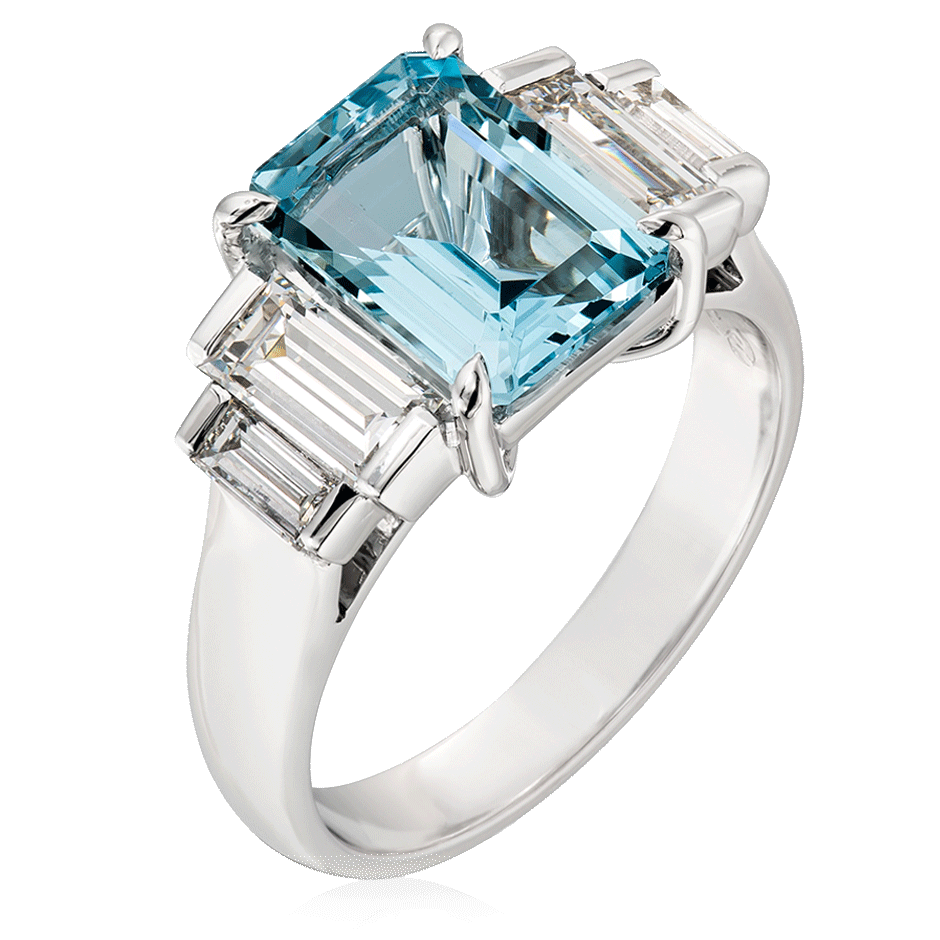
Showing all 20 resultsSorted by latest
-
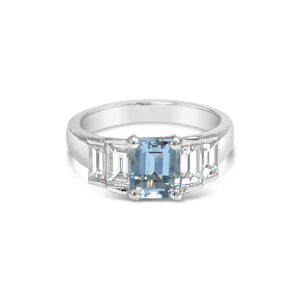
Aquamarine & Diamond Five Across Ring
-
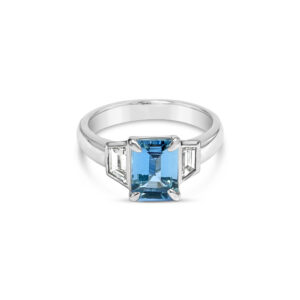
Emerald Cut Aquamarine & Trapezoid Diamond Ring
-
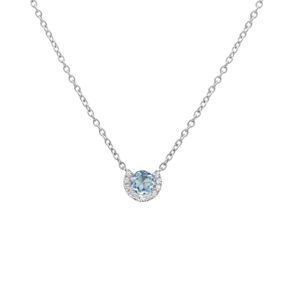
Diamond Aquamarine Necklace
-
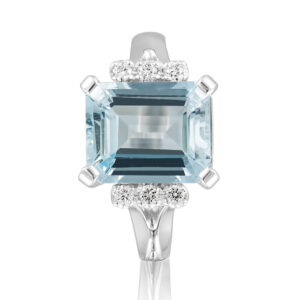
Aquamarine & Round Brilliant Cut Diamond Dress Ring
-
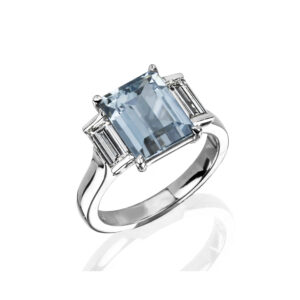
Emerald Cut Aquamarine 3 Across Ring
-
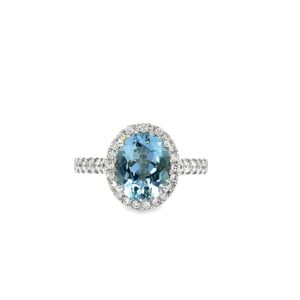
Oval Aquamarine & Diamond Ring
-
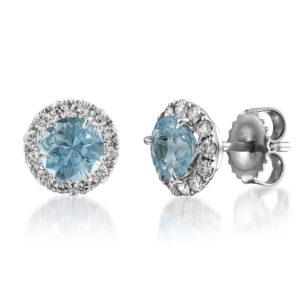
Aquamarine & Diamond Halo Stud Earrings
-
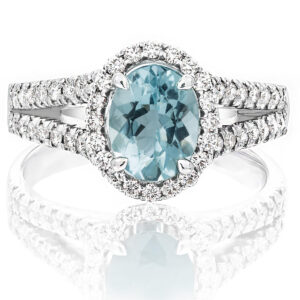
Oval shape Aquamarine & diamond ring
-
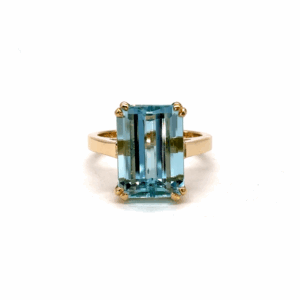
Emerald Cut Aquamarine Cocktail Ring
-
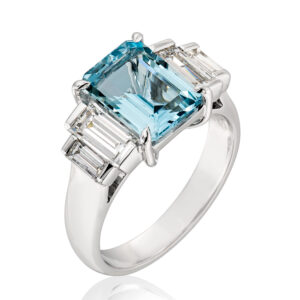
Emerald Cut Aquamarine Ring with 4 Baguette Diamonds
-
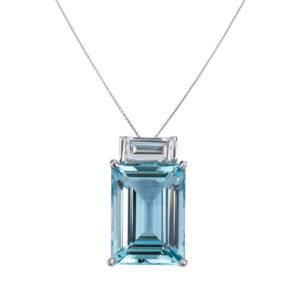
Emerald Cut Aquamarine & Baguette Pendant
-
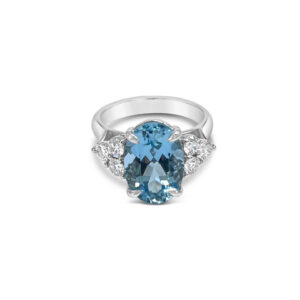
Oval Cut Aquamarine Ring with 6 Round Diamonds
-
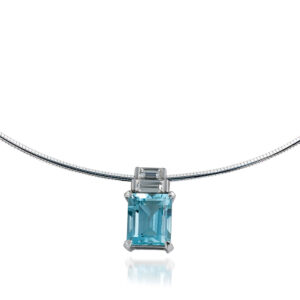
Aquamarine & baguette diamond pendant
-
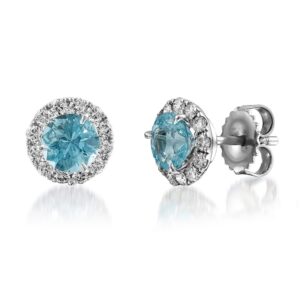
Aquamarine & Diamond Stud Earrings
-
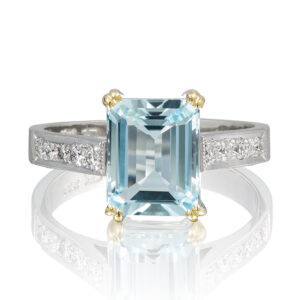
Aquamarine Ring with Diamonds in Band
-
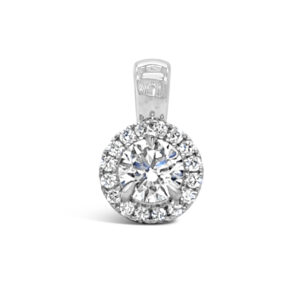
Diamond Halo Pendant
-
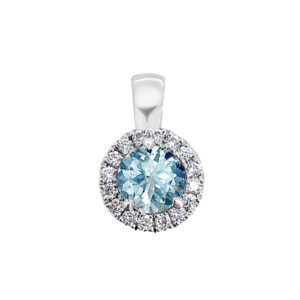
Aquamarine and Diamond Halo Pendant
-
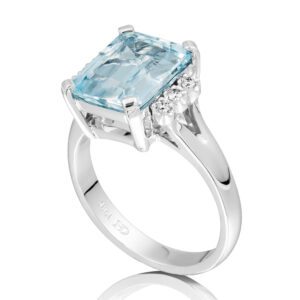
Emerald Cut Aquamarine & Diamond Ring
-
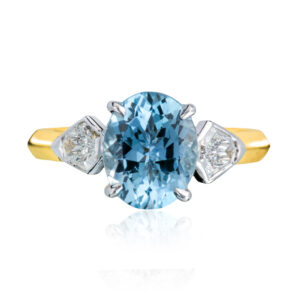
Aquamarine & Kite Cut Diamond Ring
-
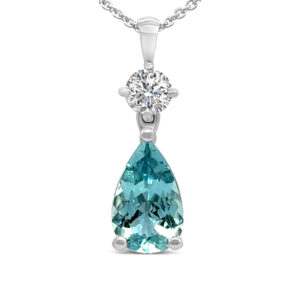
Pear Cut Aquamarine & Diamond Drop Pendant
First Tab - do not remove
Aquamarine
Is Aquamarine Precious or Semiprecious?
Aquamarine isn’t considered a precious stone. There are only four types of precious stones:
- Diamonds
- Emeralds
- Rubies
- Sapphires
Stones like opal, crystal, pearls, and jade are sometimes categorised as precious, but that’s not accurate. Every gemstone besides a diamond, emerald, ruby, and sapphire is categorised as semi-precious. Thus, aquamarine is a semiprecious gemstone and not a precious one. Even though aquamarine isn’t a precious stone, it is still a beautiful jewellery choice, and you can set your aquamarine stone in gold, white gold, or silver jewellery pieces. You can find aquamarine necklaces, bracelets, pendants, chains, earrings, and other jewellery pieces that are perfect for gifts or yourself.
What Is the Symbolism of Aquamarine Jewellery?
Aquamarine, the stunning blue birthstone for March, has unique hues among other precious and semiprecious stones used for jewellery. Its vibrant colour symbolises good health, youthfulness, and hope. It’s perfect for gifts and jewellery pieces for those you love.
Because aquamarine is often associated with the sea, it symbolises spiritual cleansing. Aquamarine invokes the purity of blue waters and the calmness and relaxation the ocean brings. Furthermore, aquamarine symbolises the feeling of trust and letting go.
During ancient times, aquamarine was considered the treasure of mermaids. Sailors used aquamarine as a talisman to have good luck on the open waters. The aquamarine stone was also used as a symbol of fearlessness and protection. Today, aquamarine is said to bring protection and happiness to those who travel over or near water. Additionally, aquamarine represents clear communication coming directly from the heart. Aquamarine can be the perfect stone for a necklace, ring, bracelet, or piece of jewellery.
Is The Price of Aquamarine More Expensive Than Sapphire?
Although aquamarines and sapphires cost a wide range of prices, aquamarines are often less costly than sapphires, which make them perfect for more affordable jewellery pieces. Typically, a high-quality aquamarine costs between $400 and $600 per carat, while sapphire generally has a sale price between $1,000 and $3,000 per carat. The price includes factors such as size and quality. Aquamarine makes a great gift, you can shop our collection of aquamarine jewellery in-store and find beautiful gifts for your loved ones or for yourself. We have beautiful jewellery pieces for sale ranging from necklaces and earrings to bracelets and pendants.
Which Is Better: Aquamarine or Blue Topaz?
Here’s how these two beautiful blue gems stack up side by side for jewellery:
- Availability: Both jewels are readily accessible, but blue topaz is more accessible because it goes through common heat treatments. Aquamarine is rarer because of its natural colour; richly saturated gemstones are often pricey and scarce.
- Colour: Many blue topaz jewels are heat-treated, whereas aquamarine is often a raw, natural stone. Of course, some aquamarines are heat-treated to improve their colour saturation.
- Durability: Aquamarine wins over blue topaz because of its excellent resistance to abrasions and external cracking.
- Price: Blue topaz gems are more affordable because they’re widely available. Aquamarine costs twice as much as blue topaz, thanks to its natural colour.
If you want the best value for your money, blue topaz jewellery is better than aquamarine. However, aquamarine is perfect for you if you value organic and rare gems which will keep their beauty longer. Aquamarine stones look dazzling in necklaces, earrings, bracelets, and other jewellery pieces.
Do Aquamarine Earrings, Necklaces, and Custom Jewellery Scratch Easily?
Aquamarine has a hardness value of eight on the Mohs scale. That means aquamarine has a high resistance to abrasions and scratches, making it an excellent choice for everyday jewellery. If you have aquamarine earrings, bracelets, pendants, or necklaces, you can be confident that your jewellery will withstand the test of time. Aquamarine’s hardness also means it can keep a good polish longer, which will keep your white gold aquamarine jewellery looking shiny.
How Do I Clean Aquamarine Jewellery?
The best way to care for aquamarine jewellery is to clean it in warm and soapy water. To clean your gold or white gold aquamarine rings, necklaces, chains, pendants, bracelets, earrings, and other jewellery:
- Fill a bowl with warm water and add a small amount of detergent or dish soap.
- Let your aquamarine jewellery soak for some time, and then use a brush with soft bristles to clean the jewellery.
After cleaning your jewellery, rinse it in warm water to remove excess soap. Be sure to let the jewellery dry thoroughly. If you have questions about cleaning gold aquamarine jewellery, you can ask your jewellers.
Read more about are aquamarine stones rare.
The Different Types of Aquamarine
These stunning, semi-precious gemstones come in a variety of types that are determined by their visual characteristics. While these types include the names of locations, don’t be fooled—while some of these names include locations, such as “Santa Maria” and “Madagascar,” that does not mean the aquamarine was sourced from there.
The terms used to designate the types of aquamarine refers to the qualities of color. If there is a location attributed to the type, it’s referring to the color of aquamarines originally found in that location. For example, Santa Maria aquamarines are named after the mine where they were first discovered, but since then, stones of the same color have been found in other locations. Always ask your gem dealer for documentation to verify your aquamarine’s origin before purchase. You want to ensure that the stone you place in your necklaces, earrings, bracelets, and other jewellery pieces is a real authentic gem.
The types on this list are also common trade names for aquamarine:
- Brazilian aquamarine: Also called “Brazilian Aqua,” these gemstones have greenish tones in them. They have a stunning mix of blue and green, and when heat-treated, they lose their green hues.
- Santa Maria aquamarine: This type of aquamarine boasts a vibrant, saturated blue color. It is darker in its tones and is famous for being “eye clean.” This term refers to the inability to detect inclusions on the stone with the naked eye.
- Maxixe beryl: Also known as halbanite, this type of aquamarine is treated with beryl to give it a slight violet hue.
- Madagascar aquamarine: This type is the quintessential aquamarine most imagine. It holds a stunning, intense medium blue color.
Aquamarine’s Hardness
Considering aquamarine for an engagement ring or other everyday-wear jewellery? We can’t imagine a more perfect fit–Aquamarines rank fairly high on the Mohs scale.
The Mohs Hardness Scale measures a mineral’s resistance to scratches, with ten being the highest and most scratch-resistant. One is the lowest level of hardness, meaning something as little as a fingernail scratch will damage the stone and your jewellery pieces.
Aquamarine generally falls between 7.5 and eight on the Mohs scale, making it resistant to scratches from anything ranked lower on the scale (including steel nails, knives, and softer metals). These stones are tough, vibrant, and can withstand most scratches—but they are not immune to damage.
While aquamarines rank as very durable, factors such as imperfect cleavage can damage the gem. Gemstone cleavage refers to a break in a stone along internal planes. This naturally occurs in all crystalline materials and does not necessarily mean the gem is flawed or broken. It simply refers to the planes within the crystal structure that have weaker atomic bonds, where it is easier to cut the gem. If your aquamarine is struck on a cleavage plane, it can cause the stone to split or chip.
While aquamarine is very durable and resilient, we recommend removing your aquamarine jewellery when engaging in high-activity tasks and removing dust when necessary. Dust alone can damage semi-precious stones. Gently cleaning it with a mico-fibre cloth and warm, soapy water will also improve your stone’s longevity and vibrancy.
